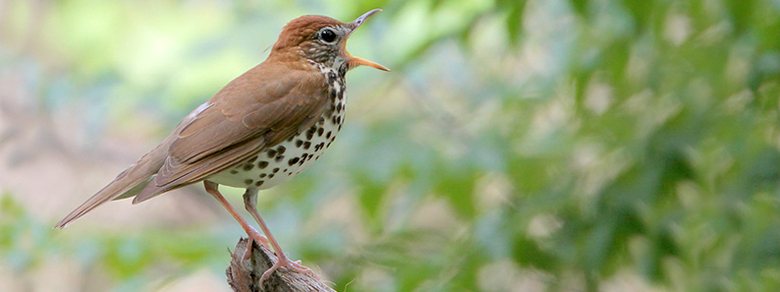|
|
|
Bird-Safe Buildings Act Reintroduced
Trouble viewing this email? Click here. |
 |
Bird-Safe Buildings Act Reintroduced!
U.S. Rep. Mike Quigley (D-IL) and Rep. Morgan Griffith (R-VA) have reintroduced the Bird-Safe Buildings Act H.R. 919. The bipartisan bill is designed to reduce bird mortality by calling for federal buildings to incorporate bird-safe building materials, design features and lighting. As many as a billion birds a year die in collisions with buildings in North America alone. You can take action and ask your members of Congress to support this bill. |
|
|
|
|
|
New Bird Conservation Alliance Director and List Serve
There is a new address to send to the Bird Conservation Alliance - bca@npogroups.org. It's purpose is to share success stories, action alerts, sign on letters, job postings and other items to help advance bird conservation. Jennifer Cipolletti, Director of Conservation Advocacy for American Bird Conservancy, is the new Director for the Bird Conservation Alliance. The goal of the BCA is to collaborate across mediums, with our conservation partners, to advance bird conservation programs and funding. This year, we are making a major push to increase bird conservation funding. |
|
|
|
|
|
|
|
FY2020 Appropriations Sign On Letter
In 2019 there is a major push to increase bird funding. Please support boosting effective bird conservation programs in the FY 2020 Interior Appropriations bills including the Neotropical Migratory Bird Conservation Act (NMBCA), Migratory Bird Joint Ventures, State and Tribal Wildlife Grants, North American Wetlands Conservation Act (NAWCA), Endangered Species Recovery, State of the Birds Activities, and the control of invasive species. These programs are well-integrated and mutually support each other to promote conservation. Click below to sign on! |
|
|
|
|
|
|
|
Save the Date! Bird Conservation Alliance Meeting and Reception
Please join us for a Bird Conservation Alliance meeting, legislative briefing and reception on Capitol Hill to discuss bird conservation programs and funding in the 116th Congress. More details to follow in an official invite. Please RSVP below! When: Tuesday, April 2, 2019 - Where: 2044-2045 Rayburn House Office Building - Legislative Briefing: 2-4:30 pm. Reception to follow. |
|
|
|
|
|
|
|
Regulators Consider Bird-Smart Wind Energy
Bureau of Ocean Energy Management (BOEM) is leading an effort to consider birds in their planning of wind energy development off the shores of California, including in three areas approximately 25 to 50 miles off the coasts of Humboldt Bay, Morro Bay, and Diablo Canyon – areas designated as having wind energy potential. "By assessing these sites, high-risk areas where wind development will endanger seabirds can be avoided," says Bird Smart Wind Energy Director Holly Goyert. |
|
|
|
|
|
|
|
Prohibition of Feral Cat Colonies at Boat Harbors in Hawaii
In December 2018 Hawaiian Governor Ige approved new regulations (HAR §13-232-57.1 and §13-232-57.2) that will prohibit the feeding of wildlife or feral animals, the abandonment of pets, and contributing to colonies of animals at small boat harbors throughout the state. This regulation is a major step forward in reducing the significant conservation and public health challenges caused by feral domestic cats. In Hawaii and elsewhere, feral cats are invasive predators of endangered species and a major vector for the parasite (Toxoplasma gondii) that causes toxoplasmosis in people and wildlife. Would these regulations be useful in your state? |
|
|
|
|
|
|
|
A Great Year for Endangered Hawaiian Seabirds
In 2018, conservation partners again provided a new home, safe from invasive predators, for some of Hawaiʻi's most imperiled seabirds. A total of 39 chicks, including 20 Endangered Uaʻu (Hawaiian Petrel) and 19 Threatened ʻAʻo (Newell's Shearwater), were moved from colonies in the mountains to the translocation site, called Nihokū, at Kīlauea Point National Wildlife Refuge. In this location, they are protected by a predator-proof fence surrounding the Nihokū restoration site. |
|
|
|
|
|
|
|
"World's Rarest Bird" Sighted in Brazil
An individual Stresemann's Bristlefront, one of the world's most endangered birds, was recently observed in Brazil after months of searches had come up empty. Sightings of the female bristlefront on December 12th and 14th in fragments of habitat in Bahia, Brazil, have renewed hope that there is still time to save this remarkable, ground-nesting songbird from extinction. With only one currently known individual, this may well be the world's rarest bird — although researchers do hope to find more individuals in the near future. |
|
|
|
|
|
|
|
California Affirms Protection of Migratory Birds
California has issued legal guidance to reaffirm its ability to continue to prohibit take of migratory birds. The move comes after Interior tightened its interpretation of the Migratory Bird Treaty Act last year to exclude unintentional take. Eight states, including California filed suit, arguing that the new interpretation inappropriately narrows the MBTA and should be vacated. |
|
|
|
|
|
|
|
|
|
|
|
|
|
|
|
|
|
|
|
American Bird Conservancy
PO Box 249, | The Plains, Virginia 20198
(540) 253-5780 | info@abcbirds.org |
|
Photo captions (top to bottom): Wood Thrush, Greg Lavaty; Jennifer Cipolletti, ABC Staff; Scarlet Tanager, Greg Lavaty; Cerulean Warbler, Dan Behm; Marbled Murrelets, Tim Zurowski, Shutterstock; I'iwi, James Petruzzi; Hawaiian Petrel chick, Andre Raine, Kaua'i Endangered Seabird; Stresemann's Bristlefront, Biodiversitas; Snow Goose, Paul Reeves Photography, Shutterstock. |
|
|
|
|
|
|
|